Table of content
Mugwort, a fragrant herb with a rich history in traditional medicine and cuisine, has been cherished for centuries across Asia, Europe, and beyond. Known for its earthy, slightly bitter flavor and vibrant green hue, this versatile plant offers a unique addition to both savory and sweet dishes. While often associated with medicinal teas or festive treats like Korean ssuktteok or Japanese kusa mochi, mugwort’s culinary applications extend far beyond these classics. This article explores the art of cooking mugwort to perfection, from selecting the freshest leaves to mastering techniques that highlight its delicate balance of bitterness and aroma. Whether you’re a seasoned chef or a curious home cook, this guide will equip you with the knowledge to transform this humble herb into a star ingredient.
Understanding Mugwort: A Brief Introduction
Before diving into recipes, it’s essential to grasp the basics of mugwort (Artemisia argyi or Artemisia vulgaris, depending on the region). This perennial plant thrives in temperate climates, with slender, serrated leaves and a tall, bushy stalk. Its flavor profile is best described as herbaceous, with notes of mint, anise, and a subtle bitterness that mellows when cooked. Mugwort is also rich in antioxidants, vitamins, and minerals, making it a nutritious addition to meals. However, pregnant individuals should exercise caution, as excessive consumption may stimulate uterine contractions.
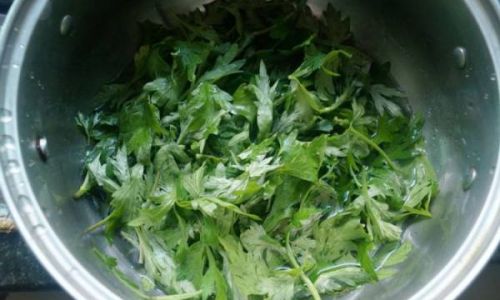
Selecting and Preparing Mugwort
The journey to delicious mugwort dishes begins with sourcing the highest-quality herb. If foraging, opt for young, tender leaves in spring or early summer, avoiding those near polluted areas. Farmers’ markets or Asian grocery stores often sell fresh or frozen mugwort, while dried varieties are available year-round.
Preparation Steps:
- Wash Thoroughly: Rinse leaves under cold water to remove dirt or debris.
- Blanching: To reduce bitterness, blanch leaves in boiling water for 1–2 minutes, then shock in ice water. This step also preserves the herb’s vibrant color.
- Drying (Optional): Hang bundles upside down in a cool, dry place for dried mugwort, which can be stored for months.
Cooking Techniques to Enhance Flavor
Mugwort’s versatility shines through various cooking methods. Experiment with these techniques to find your favorite:
Steaming: Preserving Purity
Steaming mugwort retains its natural flavors and nutrients. Wrap blanched leaves in parcels with rice or fish, or layer them under seafood like salmon. The herb infuses the dish with a subtle, grassy aroma.
Sautéing: Building Depth
Sauté mugwort with garlic, olive oil, and a pinch of red pepper flakes for a quick side dish. Pair with pasta, grains, or eggs for a hearty meal.
Boiling: Creating Broths
Simmer mugwort in broths or soups for 15–20 minutes. Its earthy notes complement mushroom, chicken, or tofu-based soups.
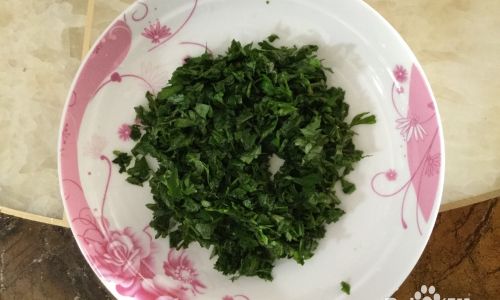
Baking: Sweet Creations
Incorporate finely chopped mugwort into batters for cakes, muffins, or pancakes. The herb’s bitterness balances sweetness beautifully—think matcha’s cousin but with a floral twist.
Fermenting: Traditional Preservation
In Korea, mugwort is fermented to make ssuk jeot (salted fermented herb), used as a condiment. This process intensifies its umami qualities.
Recipe Ideas: From Classic to Creative
Mugwort and Rice Cake Soup (Ssuk Guk)
A Korean New Year’s staple, this soup symbolizes purity and health.
Ingredients:
- 1 cup blanched mugwort, chopped
- 8 cups beef or anchovy broth
- 1 cup rice cakes (tteok)
- 1 egg, beaten
- 2 garlic cloves, minced
- Salt and pepper to taste
Instructions:
- Simmer broth with garlic for 10 minutes.
- Add rice cakes and cook until soft.
- Stir in mugwort and simmer for 5 minutes.
- Drizzle beaten egg into the soup, stirring gently.
- Season and serve hot.
Mugwort Pesto Pasta
A vibrant twist on the Italian classic.
Ingredients:
- 2 cups fresh mugwort leaves
- ½ cup basil leaves
- ¼ cup toasted pine nuts
- ⅓ cup Parmesan cheese
- ⅓ cup olive oil
- 2 garlic cloves
- Salt and lemon juice to taste
Instructions:
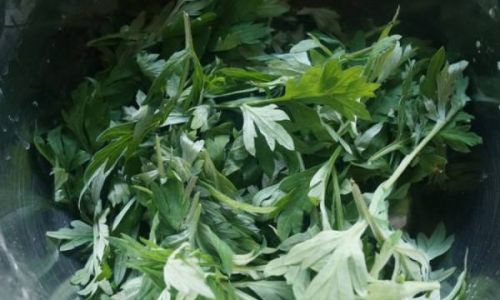
- Blend all ingredients until smooth.
- Toss with cooked pasta and cherry tomatoes.
- Garnish with grated Parmesan.
Mugwort and Chive Dumplings
These dumplings offer a fragrant, herbal kick.
Ingredients:
- 2 cups finely chopped mugwort
- 1 cup minced chives
- 1 lb ground pork
- 2 tbsp soy sauce
- 1 tbsp sesame oil
- Dumpling wrappers
Instructions:
- Mix pork, mugwort, chives, soy sauce, and sesame oil.
- Fill wrappers and seal.
- Steam or pan-fry until golden.
Mugwort Latte
A soothing, caffeine-free beverage.
Ingredients:
- 1 cup milk (dairy or plant-based)
- 1 tbsp dried mugwort
- 1 tsp honey or maple syrup
- ¼ tsp vanilla extract
Instructions:
- Simmer milk and mugwort for 5 minutes.
- Strain and sweeten.
- Froth and serve with a sprinkle of cinnamon.
Pairing Mugwort with Complementary Ingredients
To balance mugwort’s bitterness, pair it with ingredients that enhance its natural flavors:
- Fatty Proteins: Salmon, pork, or tofu absorb its herbal notes.
- Umami-Rich Foods: Mushrooms, miso, or Parmesan deepen its complexity.
- Sweet Elements: Honey, dates, or caramelized onions offset its bitterness.
- Citrus: Lemon or yuzu zest brighten its earthy tones.
Health Benefits and Culinary Precautions
Mugwort’s nutritional profile includes vitamins A, C, and K, along with antioxidants like quercetin. It’s traditionally used to aid digestion, relieve menstrual cramps, and reduce inflammation. However, moderation is key:

- Pregnancy: Avoid large quantities due to potential uterine stimulation.
- Allergies: Those allergic to ragweed or chrysanthemums may react to mugwort.
- Sourcing: Ensure organic or pesticide-free leaves if foraging.
Storing Mugwort for Year-Round Use
Extend mugwort’s shelf life with these methods:
- Freezing: Blanch, chop, and freeze in ice cube trays with water or oil.
- Drying: Hang bundles or use a dehydrator; store in airtight jars.
- Infusing Oils: Submerge leaves in olive oil for 4–6 weeks; strain for a fragrant cooking oil.
Troubleshooting Common Issues
Issue 1: Overpowering bitterness.
Solution: Balance with sweet or fatty ingredients. Reduce cooking time to retain freshness.
Issue 2: Mushy texture after cooking.
Solution: Blanch briefly and avoid overcooking. Use tender young leaves for delicate dishes.
Issue 3: Dull color.
Solution: Add baking soda to blanching water or cook with alkaline ingredients like rice flour.
Cultural Significance and Modern Adaptations
Mugwort’s role in cuisine is deeply intertwined with tradition. In Japan, it’s used to color and flavor kusa mochi for spring festivals. In Europe, it’s a key ingredient in vermouth and bitters. Modern chefs now experiment with mugwort in cocktails, ice creams, and even savory foams, proving its adaptability.
Conclusion: Elevating Everyday Meals with Mugwort
Cooking mugwort deliciously is an art that rewards patience and creativity. By understanding its flavor nuances, pairing it thoughtfully, and employing techniques that highlight its best qualities, you can elevate this humble herb into a culinary marvel. Whether you’re recreating ancestral recipes or inventing new dishes, mugwort offers a bridge between tradition and innovation. So, the next time you encounter this vibrant green herb, embrace its potential—your taste buds (and your guests) will thank you.
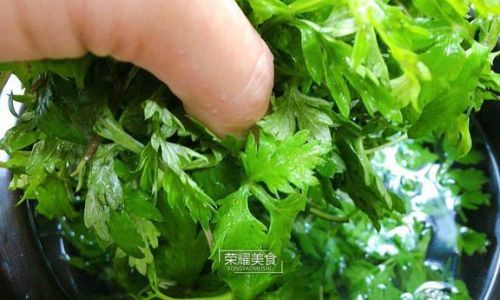
Final Tip: Start small. Incorporate mugwort gradually into familiar dishes to acclimate your palate. Over time, you’ll discover its magic lies not just in its flavor, but in its ability to transform the ordinary into the extraordinary.



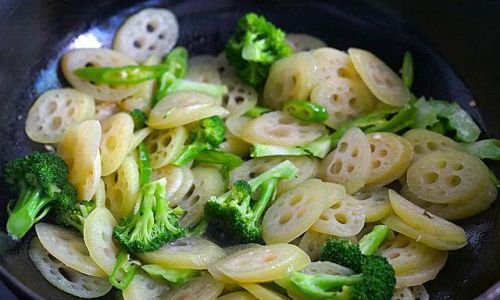


0 comments